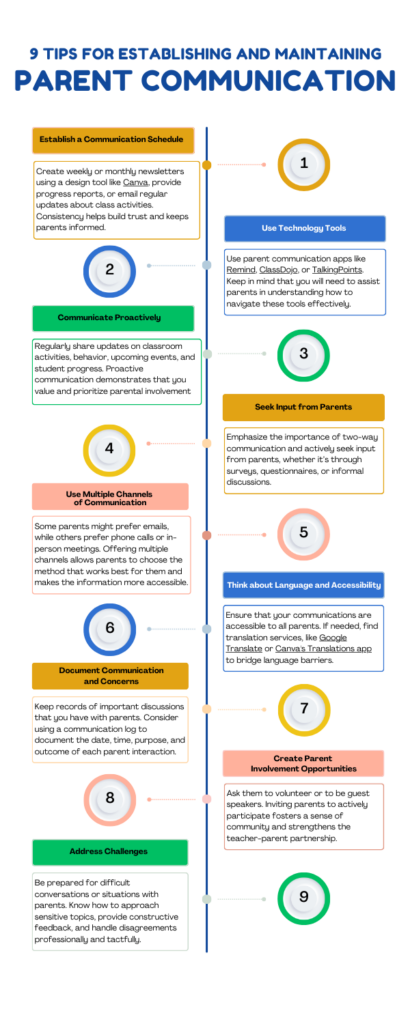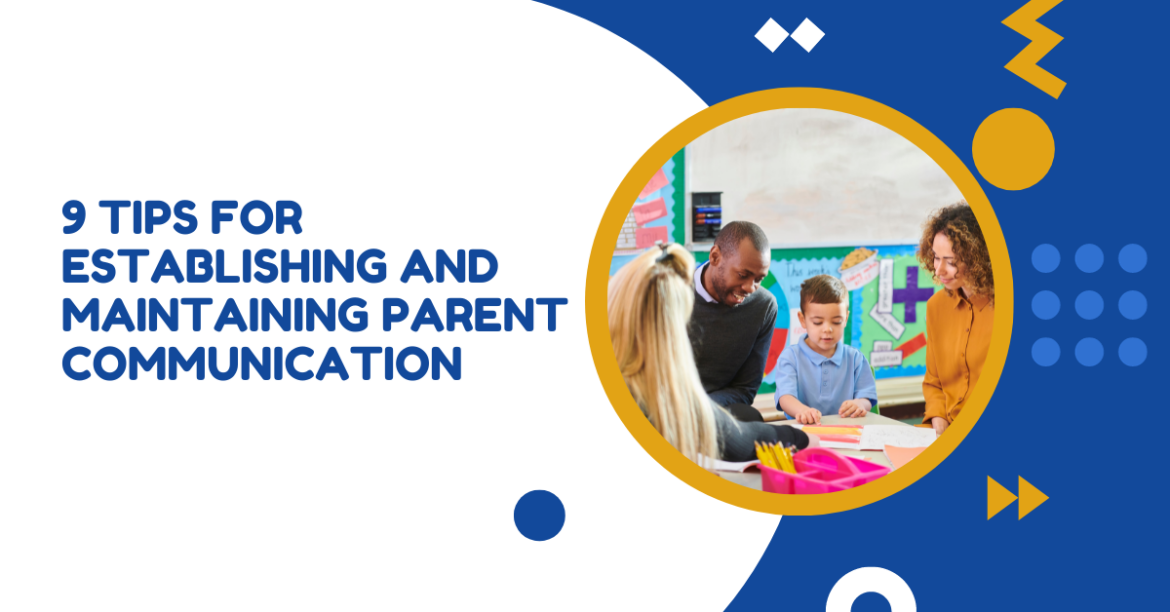Parent communication is a critical aspect of a teacher’s role. It fosters collaboration, builds relationships, and ensures shared goals for student growth. Here are some specific strategies and tips to help you with parent communication.
1. Establish a Communication Schedule
When the school year gets started, it’s easy to get sidetracked. Setting a consistent communication schedule with parents will help with that. You can create weekly or monthly newsletters using a design tool like Canva, provide progress reports, or email regular updates about class activities. Consistency helps build trust and keeps parents informed.
2. Use Technology Tools
Technology can help with parent communication. You will want to store information, such as parent names, email addresses, etc. in a spreadsheet that you can easily access. In addition, you can use parent communication apps like Remind, ClassDojo, or TalkingPoints. Keep in mind that you will need to assist parents in understanding how to navigate these tools effectively.
3. Communicate Proactively
It’s important to be proactive and initiate communication with parents before any issues arise. Regularly share updates about classroom activities, behavior, upcoming events, and student progress and achievements. Proactive communication demonstrates that you value and prioritize parental involvement and makes parents and guardians feel “in the loop.”
4. Seek Input from Parents
Emphasize the importance of two-way communication and actively seek input from parents, whether it’s through surveys, questionnaires, or informal discussions. Actively listening to parents’ perspectives helps build strong relationships and will allow you to address any concerns or questions.
5. Use Multiple Channels of Communication
Use a variety of communication methods to accommodate parent preferences. Some parents might prefer emails, while others might prefer phone calls or in-person meetings. Offering multiple channels allows parents to choose the method that works best for them and their schedules and makes the information more accessible.
6. Think about Language and Accessibility
Ensure that your communications are accessible to all parents. If needed, find translation services, like Google Translate or Canva’s Translations app, to bridge language barriers.
7. Document Communication and Concerns
Keep records of important conversations or concerns that you discussed with parents. Consider using a communication log to document the date, time, purpose, and outcome of each parent interaction. This documentation can be helpful in maintaining clear communication, tracking progress, and referring back to previous discussions if needed.
8. Create Parent Involvement Opportunities
Be sure to create opportunities for parent involvement in your classroom. Ask them to volunteer or to be guest speakers. Inviting parents to actively participate fosters a sense of community and strengthens the teacher-parent partnership.
9. Address Challenges
Be prepared for difficult conversations or situations with parents. Know how to approach sensitive topics, provide constructive feedback, and handle disagreements professionally and tactfully. Read these tips on how to deal with difficult parents.
Remember, effective communication is key to building strong teacher-parent relationships. Keep the lines of communication open, be transparent, and always address any concerns or questions promptly to ensure a positive and collaborative partnership.


